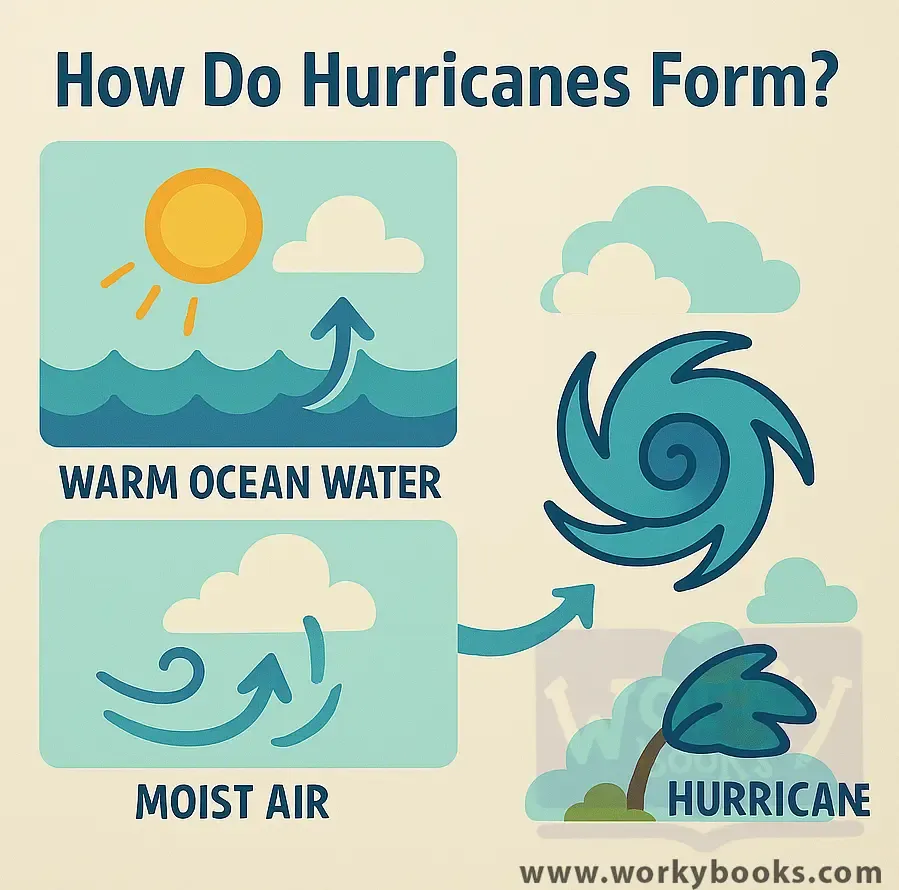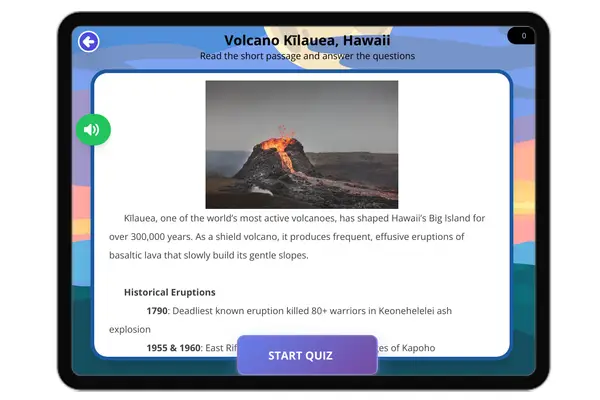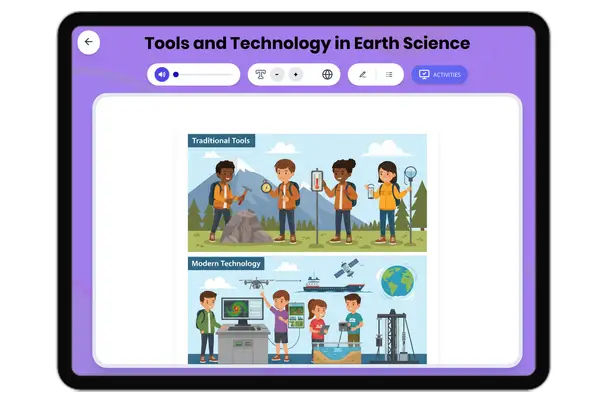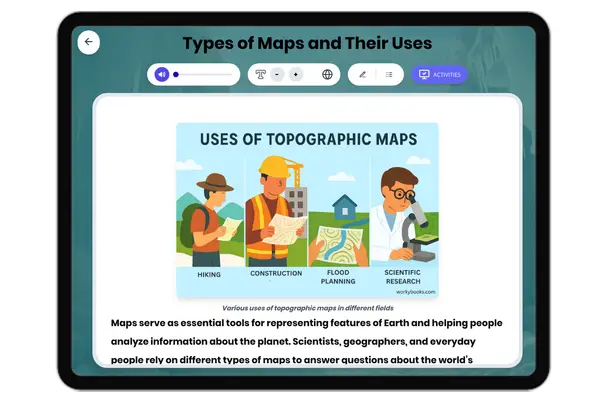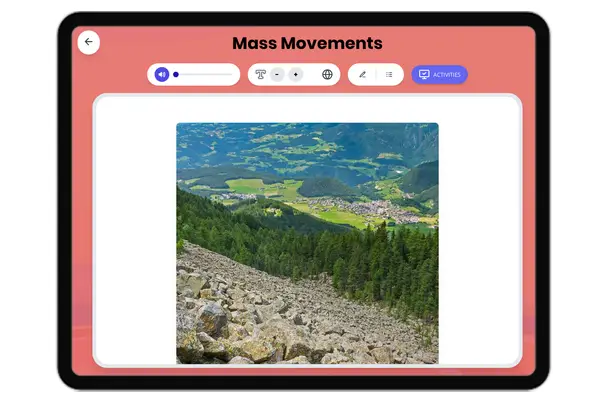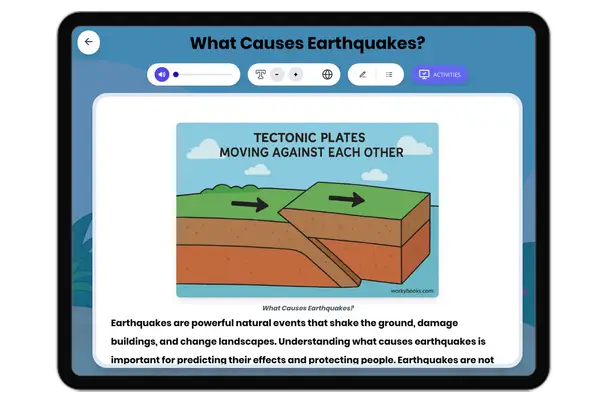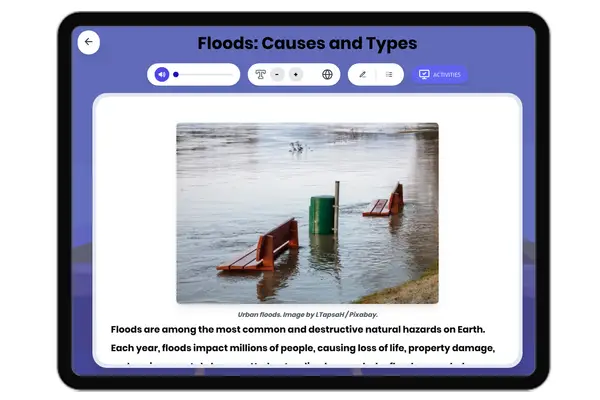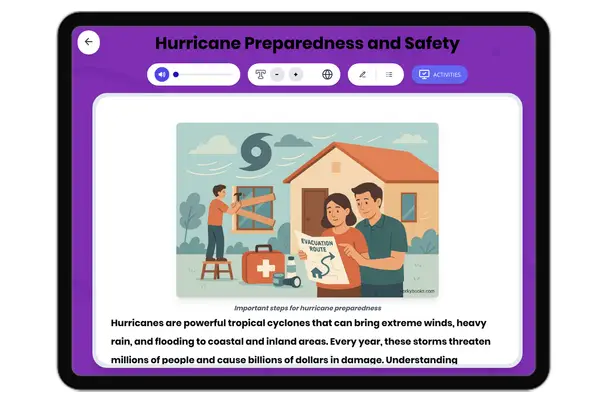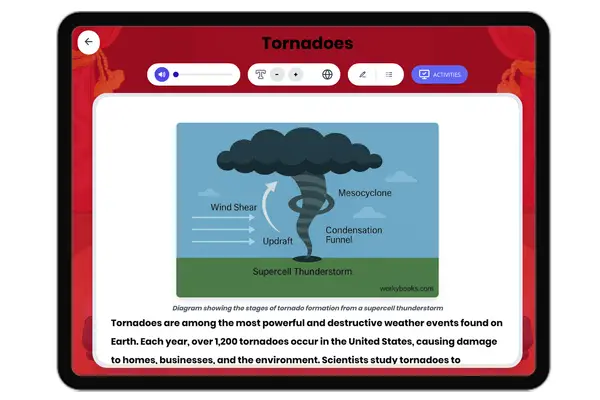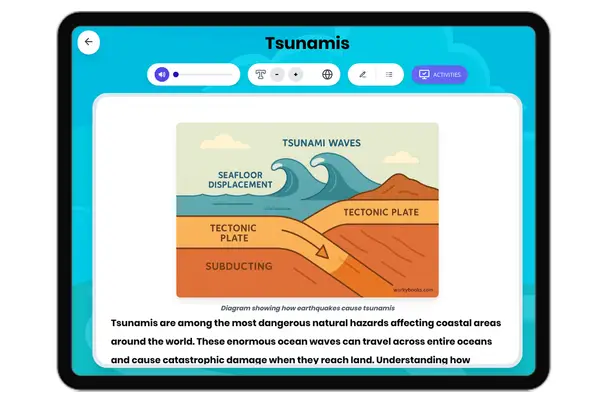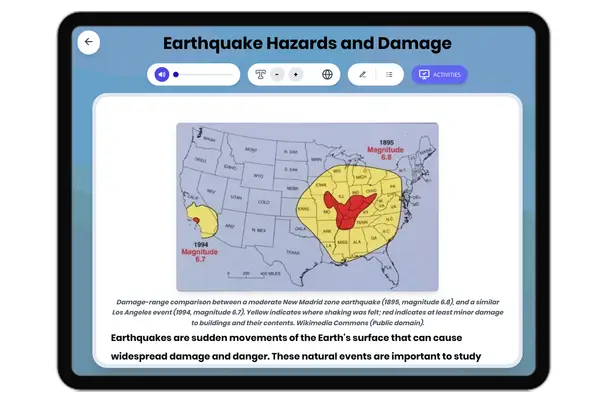How Do Hurricanes Form? — Reading Comprehension
Premium Resource
Grades
- 3
- 4
- 5
- 6
- 7
- 8
Standards
- MS-ESS3-2
PRINT+DIGITAL RESOURCE
This learning resource is available in interactive and printable formats. The interactive worksheet can be played online and assigned to students. The Printable PDF version can be downloaded and printed for completion by hand.
About This Reader
This NGSS-aligned science passage helps students understand how hurricanes form and why they are so powerful. It describes the conditions needed for hurricane formation—warm ocean water, moist air, and the Coriolis effect. Key concepts like the eye, eyewall, and storm surge are clearly explained. Real-world tools such as satellites and hurricane-hunting planes are discussed as part of the forecasting process. The passage supports middle school students' comprehension and aligns with NGSS Earth and Space Science standards related to weather systems and natural hazards. Ideal for classrooms focused on weather, forecasting, and storm preparedness.
Perfect For:
👩🏫 Teachers
- • Reading comprehension practice
- • Auto-graded assessments
- • Literacy skill development
👨👩👧👦 Parents
- • Reading practice at home
- • Comprehension improvement
- • Educational reading time
🏠 Homeschoolers
- • Reading curriculum support
- • Independent reading practice
- • Progress monitoring
Reading Features:
📖
Reading Passage
Engaging fiction or nonfiction text
❓
Comprehension Quiz
Auto-graded questions
📊
Instant Feedback
Immediate results and scoring
📄
Printable Version
Download for offline reading
🔊
Read Aloud
Voice-over with word highlighting



